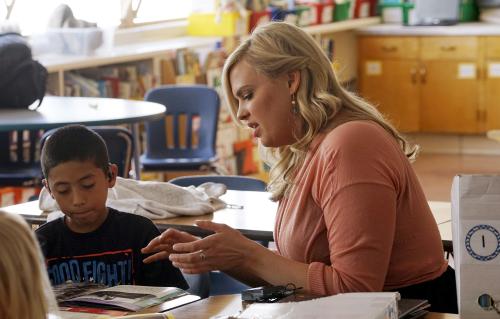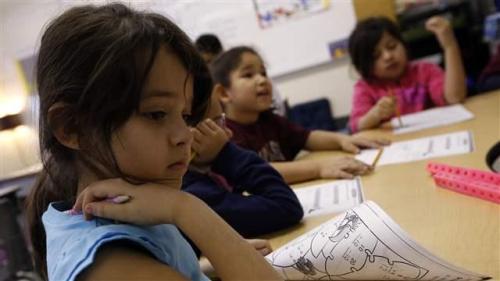On December 17, 1999, the U.N. General Assembly declared August 12th as International Youth Day to celebrate the crucial role that young people play in shaping and transforming societies. This year’s theme, “transforming education,” is an apt reminder that investing in high-quality education is key to capitalizing on the potential of all youth and achieving sustainable and equitable development.
Adolescents, or young people between the ages of 10 and 25, represent roughly 25 percent of the world’s total population. This population of 1.8 billion individuals makes up the largest adolescent population in modern history, placing adolescents at the center of global attention. While there are efforts to enhance adolescent well-being, learning, and opportunities, much of the focus has been on early childhood education and post-secondary employability—the years in between are often largely ignored. According to UNICEF: “Young adolescents (aged 10-14) are often invisible in discourse and data, falling between policies and programmes focused on children and on youth.” And, to the extent that youths do receive attention, it is often from a developmental deficit perspective.
But, the adolescent years offer great promise. As stated in the most recent report of the National Academies of Sciences, Engineering, and Medicine, titled “The Promise of Adolescence: Realizing Opportunity for All Youth,” changes in adolescent brains—contrary to what is commonly believed—“present young people with unique opportunities for positive, life-shaping development, and for recovery from past adversity.” In other words, this developmental period presents unique opportunities for youth to learn and grow in ways that can set a strong foundation for the rest of their lives.
“During the teen years, our minds change in the way we remember, think, reason, focus attention, make decisions, and relate to others. From around age twelve to age twenty-four, there is a burst of growth and maturation taking place as never before in our lives. Understanding the nature of these changes can help us create a more positive and productive life journey.”
– Daniel Seigel, clinical professor of psychiatry at the UCLA School of Medicine
Education can take advantage of the malleability of the adolescent brain to bolster the cognitive, social, and emotional skills that can positively change the life trajectory of youths. While research has shown long-term benefits of promoting social and emotional skills in youth, little is known about how these skills typically develop during the adolescent years. As the quote above states, understanding the nature of the changes, such as whether there are predictable patterns of development, is key to designing appropriate interventions when they may be necessary.
In order to better understand and inform social and emotional learning (SEL) programs for adolescents, the authors of this blog, along with colleagues at the University of Virginia, examined normative growth trajectories of adolescents’ social and emotional skills. Three findings are worth noting, particularly to understand the development of these skills:
- SEL skill development is dynamic. Social and emotional skills do not always follow a simple linear developmental trajectory. That is, the expectation that adolescents should increasingly improve these skills over time is false. The decrease, increase, or even bell-shaped curve of these skills is all part of normal adolescent development that occurs as the connections between brain regions become more efficient and specialized, depending on experiences.
- Not all social and emotional skills take the same developmental path. In looking across five essential social and emotional skills (self-awareness, self-management, responsible decisionmaking, forming relationships, and relationship quality), no two had the same growth pattern. Oftentimes, social and emotional skills are lumped together, as if all these skills were the same; however, our research shows this is not the case. This means that, rather than assuming all skills develop similarly for all youth, teaching approaches and interventions may need to be differentiated depending on the skill.
- Males and females have different developmental trajectories. Across all of the social and emotional skills we reviewed, there were differences in the trajectories between males and females—in some cases, the difference was drastic. Figure 1 below illustrates this point. Note that the black line is for the overall sample; the red line for female-only sample; and the blue line for the male-only sample. We know that there is an interplay between biology and environment, but this finding shows the importance of considering the nuanced association between social and emotional skills and the biological, cultural, and developmental factors that influence their development.
Figure 1. Growth trajectories for relationship quality
Note: Age centered at 10 years. The red line represents females; blue, males; and black, both together.
Source: Adapted from Ross, Kim, Tolan, & Jennings (2019). “An exploration of normative social and emotional skill growth trajectories during adolescence.” Journal of Applied Developmental Psychology, 62, 102-115.
Adolescent brains are unique and dynamic; they are optimally designed to meet the many changes and challenges that youths encounter. Investing in better understanding of how adolescents learn and develop is crucial to propelling them to greater success in adulthood. Fighting inequalities in education and producing a highly skilled workforce for the upcoming decades starts with early childhood education but cannot stop there. Until we better understand the adolescent brain, we must celebrate unpredictable and nonlinear youth development and appreciate this period of flexibility, ripe for learning and growth.
Walid Hedidar contributed to the research and analysis of this piece.








Commentary
How do social and emotional skills develop in youth?
August 9, 2019